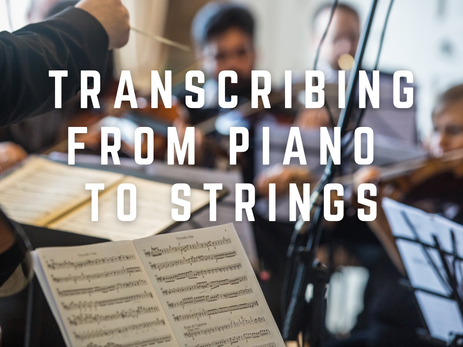Uncategorized
How to Transcribe from Piano to Strings
Transcribing from Piano to Strings
https://www.youtube.com/watch?v=6ehJHpxURNw&t=3s
Have you ever wondered how to transcribe from piano to strings?
Did you find it difficult to simulate the effect of the sustain pedal?
In this article, we will discuss these topics and many more related to scoring for strings. After reading, you will have the tools to orchestrate short pieces for the strings orchestra.
Distribution of the Material
First, let’s look at three terms that we use in orchestration to talk about the distribution of the material in an ensemble situation:
- Foreground: is the voice that stands out the most—usually, the melody.
- Middle Ground: countermelodies or contrapuntal material.
- Background: accompaniment.
We should then consider that there are musical passages in which it is not possible to find the foreground, middle ground and background.
How to Simulate the Effect of the Sustain Pedal
Below is an excerpt from a piano piece and two examples illustrating how that excerpt could be orchestrated.
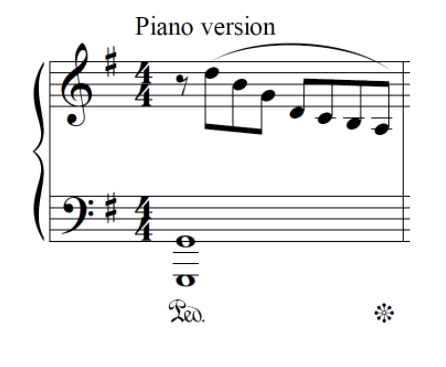
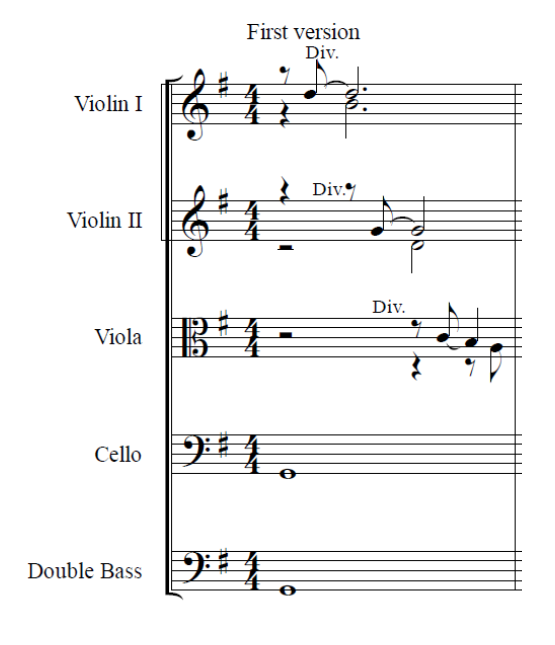
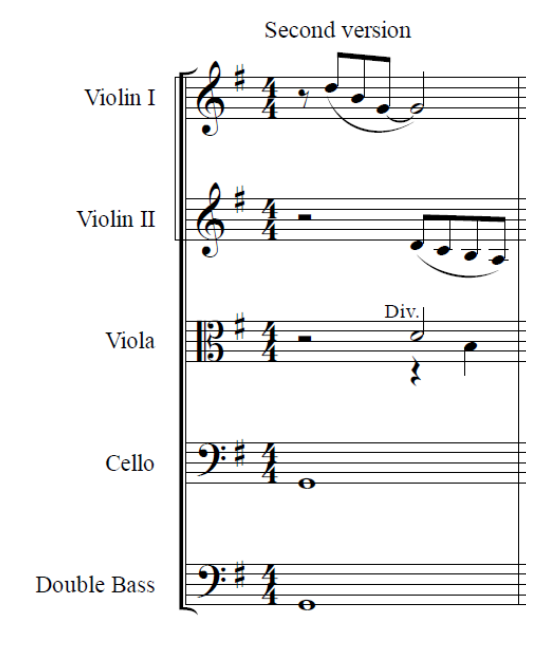
Now let’s see how to orchestrate the first section of Schumann‘s Mignon Op. 68, No. 35.
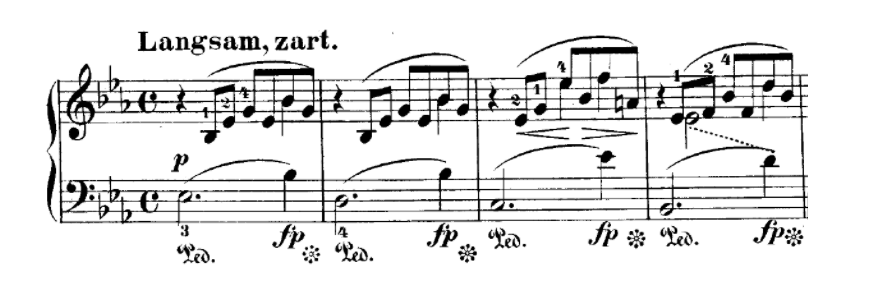
Let’s do a brief analysis of this excerpt:
Key: Eb major
Time signature: 4/4
Texture: melody with accompaniment
Number of voices: 4
We must consider that there are four voices to orchestrate this excerpt.
Below we show a reduction that illustrates the leading of the four voices:

Once we have done the analysis and have discovered the behaviour of the voices, it will be easy to transcribe the excerpt for string orchestra.
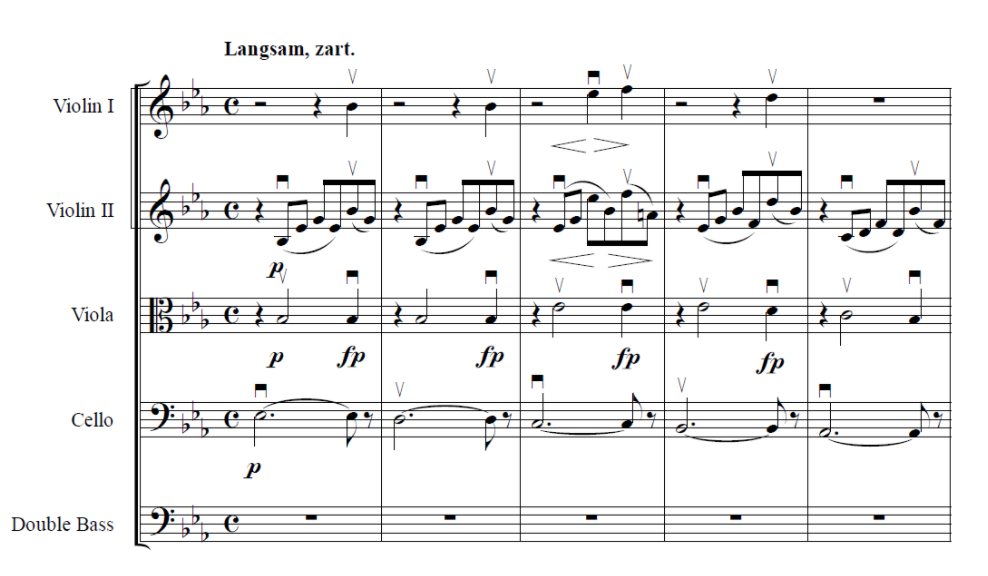
Aspects to consider:
- Simulation of the sustain pedal
- Dovetailing of parts to re-create smoothness
- Be true to the composer’s intentions
Tips for Efficient Orchestration
To close this article, we will share our tips for efficient orchestration:
1. Analyze the piece before starting to orchestrate. You must be sure you have a full understanding of the form, texture, cadences, harmony and compass, as well as voice leading.
2. Visualize which instrument play each part. It is not enough to think of the timbre you would like for a particular passage. Take a couple of minutes to see if the register of the instrument you want to use matches the log of the part you want to orchestrate.
3. Don’t start writing down notes until you have a solid idea of what you want to do!

